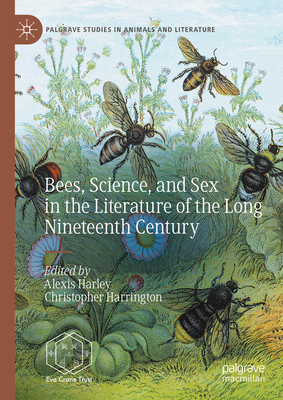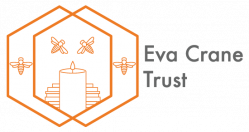Bees, Science, and Sex in the Literature of the Long Nineteenth Century.
Bees, Science, and Sex in the Literature of the Long Nineteenth Century.

The long nineteenth century (1789-1915) was a period of exceptional expansion, innovation, and modernisation in apiculture and mellitology. It was the period in which honeybees were first moved by humans to every habitable continent of the globe, and the period when knowledge about honeybee reproductive sexuality and sociability were established on firm scientific grounds. It was also the period when knowledge about pollination, and the commercial value of the honeybee as a pollinator, was widely disseminated across the Anglophone world, and it was the period which saw the development of new beekeeping technologies, such as the Langstroth hive and the bee space, which helped maximise honey yields and minimise the hazards of beekeeping, both to keepers and bees. Finally, it was the period that saw tremendous growth in individual, community, and professional beekeeping, and corollary creation numerous local, state, national, and even international beekeeping societies.
The purpose of this research project was to investigate how new and emerging scientific ideas, along with the expansion of human-honeybee interactions, intersected with the cultural and literary changes at work during the long nineteenth-century. Honeybees have been recognised by scholars as holding profound literary value to human culture on account of their production of resources of exceptional quality (“sweetness and light”), and because of the apparent “harmony” projected by their social organisation. In 2016, a critical space was convened to explore the textual appearance of honeybees in new social, political, legal, colonial, sexual, gendered, scientific, and ecological locations. Scholars working across the humanities and social sciences were invited to submit abstracts for critical, literary, and historical essays (c. 4500, 7000 words in length) devoted to the representation of bees in the literature of the long nineteenth century. By 2019-2020 period a publication proposal was submitted and (in 2021) accepted by the editors of Palgrave Macmillan’s Studies in Animals and Literature book series (see appendix, table 1., for complete project timeline).
The resulting book, Bees, Science, and Sex in the Literature of the Long Nineteenth Century (2023), consists of 11 critical essays divided loosely into three periodical sections: the late eighteenth and early nineteenth century, the early to mid-nineteenth century, and mid to late nineteenth century (see appendix, table 2., for contents outline). The essays are composed by sociologists, ecocritics, historians of beekeeping, cultural entomologists, and historians of literature, science, sexuality, and the law.
Diane Rodgers’ essay “Moral Science, Moral Lessons, and Honeybees in Nineteenth Century Natural History” presents an overview of the different types of textual knowledge generated about honeybees over the course of the nineteenth century. Her essay draws attention to the ways in which figurative language, analogy in particular, worked differently in scientific, religious, and secular apicultural literature. Adam Komisaruk’s essay “Symbiosis of Slaughterhouse: Honeyed Analogy in Erasmus Darwin” focuses on turn-of-century theories about the function of nectar, honey, and pollen in flower-bee relationships. His essay contrasts the exploration of these theories in the poetry of Erasmus Darwin and John Evans, and points out how each poet-naturalist used epic poetry to represent the perceived inequality between bees and flowers. Claire Knowles’ essay, “The Social Insect in the Fashionable Newspaper, Reading Bee Poems in The World and Morning Post”, unearths a series of bee poems in upper-class Regency newspapers. Her essay spotlights how new ideas about the social nature of bees made them congruent mediators in the highly sociable print-culture of the late-eighteenth and early nineteenth century. Hermione de Almeida’s essay, “John Keats’ Honeybees, Sound, Passon, Medicine, and Natural Prophecy” traces the development of Keats’ compounding evocation of honeybees in his poetry, from his earliest sonnets, through to his fragmentary epic poem about the sun-God Hyperion, who could be seen as figure that foregrounds contemporary concerns about bee extinctions.
Jessica White’s essay, “The Bees Seem Alive and Make A Great Buzzing: Unsettling Homes in South-West Western Australia”, charts the historical introduction of honeybees into Australia by reconstructing the story of Georgiana Molloy’s migration to Australia with a hive of honeybees. White suggests that Molloy’s broader obsession with the flora of Western Australia was founded upon the pollination services of native bees, and her ignorance about this speaks to a larger cultural ignorance about precolonial indigenous relationships to bees and plants. Christopher Harrington’s essay, “The Ideas Are In The Air: From Drone Bees to Honey Women, cultural paradox in the democratic rhetoric of British Chartism and Colonial Australia Suffragism”, seeks to demonstrate the important role that honeybees came to play in two nineteenth-century democratic movements: Chartism and Colonial Suffragism. It explores how gender shaped the deployment of honeybees in these two movements by reading how each movement sought to naturalise its discourse by appropriating selective aspects of honeybee natural history. Adam Ebert’s essay, “Housewives and Old Wives: Sex and Superstition in English Beekeeping”, aims to rethink the gendered nature of beekeeping in the nineteenth century. His essay demonstrates how the scientific professionalisation of beekeeping coincided with the push to gender traditional beekeeping as both feminine and superstitious.
Katy Barnett’s essay “Bees in Nineteenth Century Law and Lore” presents an overview of the legal status of honeybees in the nineteenth century. Her essay points out how the categories of wild and domestic were used in contradictory ways to support the human control and spread of honeybees. Alexis Harley’s essay “Thomas Hardy’s Bees, Sex, Domestication, and Wildness” considers the significance of debates about the honeybees’ domestication for figurative and literal exchanges between bees and characters in Hardy’s canonical Wessex novels. Her essay delineates how Hardy’s representation of bees was never static but developed alongside his changing commitment to his tragic Darwinian vision of life. The final essay in this collection is Jonathan Smith’s “Through The Agency of Bees: Charles Darwin, John Lubbock, and The Secret Lives of Plants and People.” This essay centers on Charles Darwin and John Lubbock’s scientific relationship with respect to their interest in pollination ecology. Smith’s essay highlights how the biological complexity created by plant-bee relationships worked to queer traditional Anglican ideas about marriage and sexuality.
Without the support of Eva Crane and the Eva Crane Trust this project would have not been achievable. While Eva Crane’s own publications, most notably The World History of Beekeeping and Honey Hunting (1999), formed a recurrent reference point for many of the questions explored in this study, the ideas and arguments contained in her numerous articles also continue to inform current debates about the history of honeybees and beekeeping. The support provided by the Eva Crane Trust funded the countless hours spent researching, editing, organising, meeting, and corresponding with individuals and organisations. Moreover, Crane’s own pioneering and passionate devotion to the cultural history and cultural importance of honeybees provided this study’s authors with a model for perseverance throughout the duration of this project. We remain forever indebted to the work of Eva Crane and were honoured to have received the support of the Eva Crane Trust.
Edited by Alexis Harley and Christopher Harrington
This book is widely available online for purchase in hard and soft copy available.
